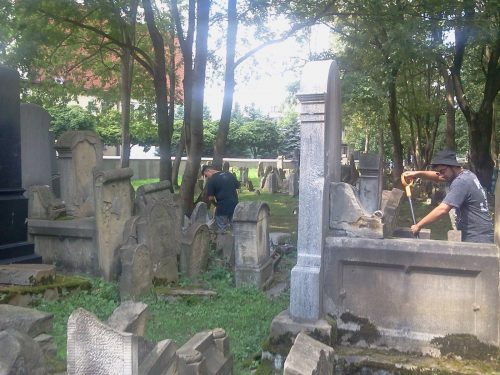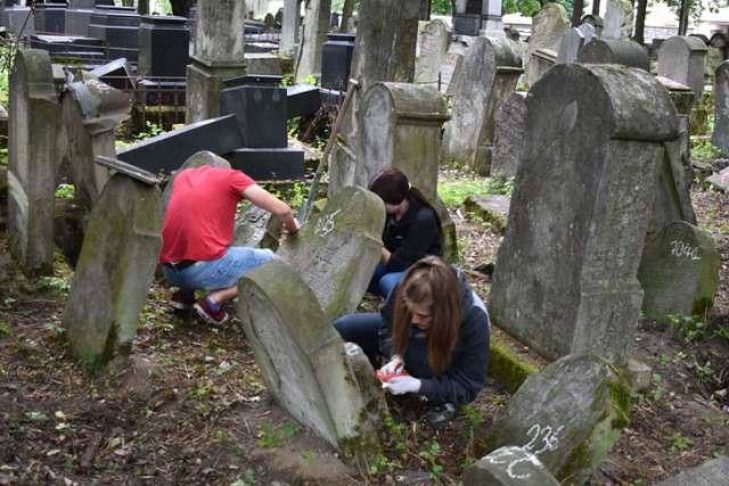Tarnów, once a hub of Eastern European Jewish life, lost nearly all of its 25,000 Jewish inhabitants in the genocide of World War II. In the last years of a 500-year-old bustling Jewish center, there were round-ups in the central square, ghettoization, mass killings in the forest outskirts, and in 1943, the remaining 10,000 Jews were liquidated—7,000 to Auschwitz and 3,000 to Plaszow.
My mother-in-law, barely an adolescent, was transported to a work camp and then Auschwitz, where she describes a harrowing, last-minute selection inside the gas chambers to join a girls’ work force in a Sudetenland labor camp. At the liberation, she returned to her hometown of Tarnów, where no relatives remained, and recovered little information about their ultimate dispensation during her lifetime. But families like ours have new opportunity to discover their histories, commemorate those lost and join together, a disparate group spread across the world, as a community with roots in Tarnów through a collaborative preservation project and social media campaign.

The non-Jewish citizens and mayor of Tarnów, in partnership with American and Israeli Jews—many of whom lost relatives—are restoring the Tarnów Jewish Cemetery: painstakingly cleaning and documenting graves; reconstructing deteriorated walls, paths and gates; conserving the beit tahara and indexing headstones and mass graves. Volunteer groups, including a Tarnów high school student group that regularly cleans and translates headstones through the matzevot program, are working toward publishing an online list of names to be available in the winter of 2019 for families. The EU has issued a 3:1 matching grant contingent upon a full dollar amount threshold raised from individual donations, which have included families, benefactors and a significant donation from the Tarnów mayor himself. The project is 65 percent near its goal, and there is an urgent call to support the fund before the grant deadline end of year.
In addition, a vibrant Facebook group, Jewish Tarnów, has burgeoned to over 800 members. Descendants of original Tarnów residents can pose questions, ask for translations or help identifying individuals and buildings in old photos, or simply connect with the ongoing restoration and cultural revival. Photos of the cemetery progress, archival photos and documents and visiting groups seeking heritage education are regularly posted. The project interest by dedicated Tarnów citizens has scaffolded a high school Jewish memory education program in Poland and an annual Jewish culture/music festival, and has invigorated Polish volunteerism to assist visitors from Israel and the U.S. seeking to resolve and remember the history of their relatives.

Adam Bartosz, the director of the Tarnów regional museum, was a fundamental force encouraging the protection of Jewish architectural and cultural remnants, which have included restoring the original bimah (the only element remaining among the rubble of the grand Tarnów synagogue) to its rightful location, and founding the Galicianer Shtetl Music Festival, the first day of which includes a march into the nearby forest to commemorate the site of mass graves; it is attended by local church and youth groups.
Marcin Zaród, an English teacher at Janusz Korczak High School in Tarnów, and his students are working on an exhibit of righteous gentiles from Tarnów, as well as a project juxtaposing archival photos from 1941-1943 with contemporary photos taken at the same site to preserve the memory of travesty and foster tolerance in these young people. Both have received the “Preserving Memory” award, which honors non-Jewish Poles who preserve, promote and care for Jewish heritage.

To learn more, connect with other families or make a tax-deductible donation of any size to help support the major restoration of the Tarnów Jewish Cemetery, please visit our website or the Jewish Tarnów Facebook group.
This post has been contributed by a third party. The opinions, facts and any media content are presented solely by the author, and JewishBoston assumes no responsibility for them. Want to add your voice to the conversation? Publish your own post here. MORE



